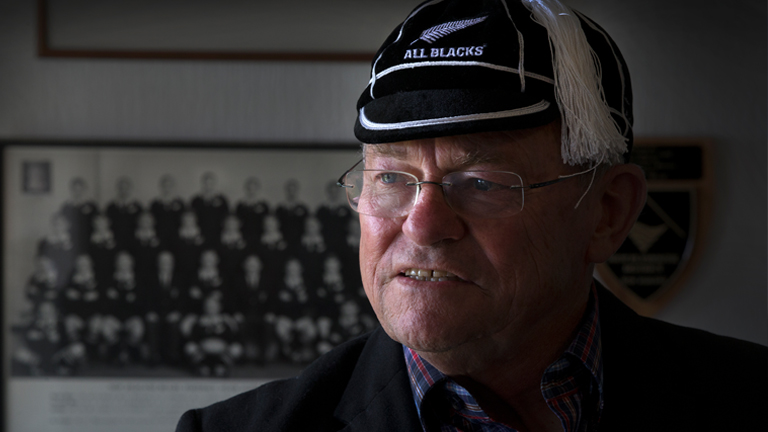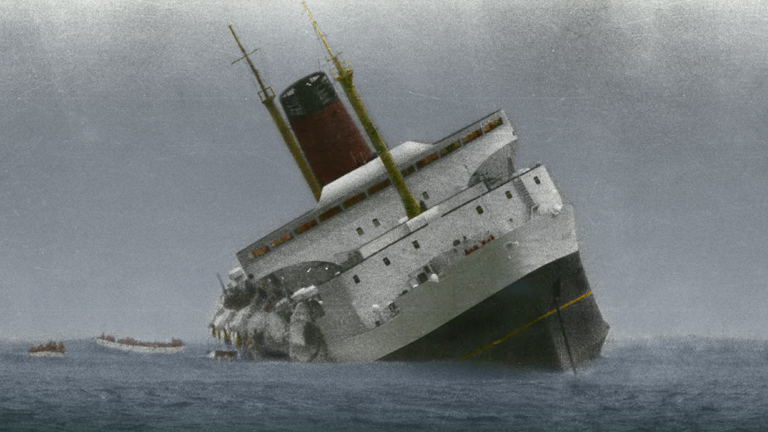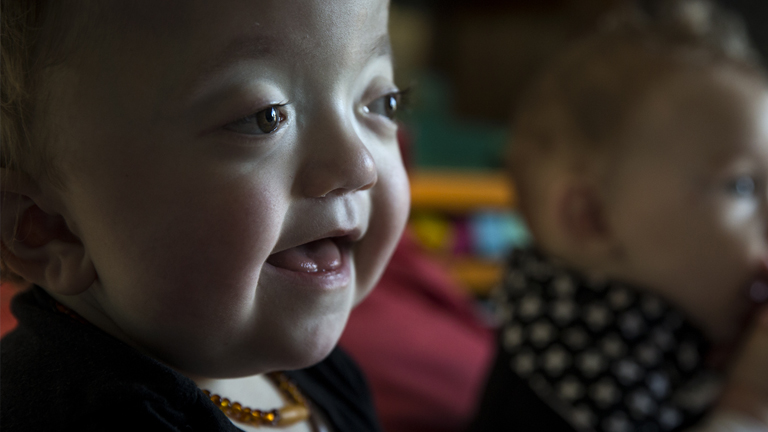SWEPT AWAY
A quick dip on a hot summer’s day turned to tragedy on Waitangi Day last year.
Rachael de Jong lost her life to save her friends. This is her story.

There is no fear on Rachael de Jong’s face, just a brilliant smile.
She’s got wet hair, she’s in her togs, standing with four friends on a rock in the middle of a river.
Behind them is clear blue sky and native bush.
A trickle of white water spills into the still pool, just enough for foam to start spreading across dark-green surface.
It’s the sort of photograph which captures the joy of a summer’s day; the perfect moment to remember the fun of a Waitangi Day road trip.
“This is a very hard photo for me to look at,” says Rachael’s father, Kevin de Jong.
“They were having fun. And they just didn’t realise the danger until it was too late.”
Just a few minutes after the selfie photo was taken, his 21-year-old daughter was swept to her death.
The dam gates of the Aratiatia Power Station, just 200 metres upstream, had opened; the trickle turned into a torrent.
Tourists watched – and filmed – in horror as the water swarmed around the rock Rachael and her friends were standing on.
They thought they were safe.
Fear gripped them once they realised the water would not stop, the current would run over the boulder and take them with it.
Kevin de Jong watches the amateur video grimly.
Each girl dives across the rapids, one by one, until the final member of the group is left.
Arms outstretched, she dives into the water. Rachael grabs hold of her, slips, turns to grab the rock and disappears from view.
The photo and video will never be made public.
Kevin de Jong doesn’t want his daughter’s final moments available for all eternity, or the survivors to have a permanent reminder on the internet.
“It’s just too hard. That’s the last time I’ll watch that,” he says of the footage which was suppressed by Coroner Wallace Bain.


These were not “silly girls taking selfies”, says Kevin, choosing to ignore the obvious danger flowing towards them.
Rather, the smiling images recovered from Rachael’s GoPro show their true state of mind.
“They thought they were safe on those rocks,” says Kevin, looking down at the river from the same spot as the tourists who filmed the last moments of his daughter’s life.
“They had no idea of the danger they were in, until it was too late.”
New signs and barriers are now in place. But Kevin de Jong says more can be done to stop another tragedy.
“There seven smart adults down there that day. They weren’t silly people. They shouldn’t have been there with hindsight. But they were.”
The Aratiatia Rapids Scenic Reserve is Department of Conservation land on the Waikato River, 13km north of Taupo.
The dam was built in 1964 and the “spill” – or controlled release of water through the rapids – for the benefit of tourists was part of the original deal for government approval.

In fact, the resource consents granted to Mercury Energy stipulate the dam must be opened four times a day in summer (or three in winter) at set times.
The Aratiatia dam is different to most.
Ordinarily, the power station would sit beside the dam, just downstream, normally at the lowest point of the rapids.
If this was the case at Aratiatia, the entire rapids would be flooded permanently.
Instead, to preserve the natural environment, the power station is located 400m away from the dam.
The water is channelled from the dam to the power station through a 10m- wide tunnel.
By opening the gates to “spill” water several times a day, the rapids make it look as if the dam does not exist.
Of course, releasing so much water is dangerous.
Under the resource consent, a siren must sound three times to warn people of the “tourist spills” - five minutes, then two, then immediately before the opening the dam.
However, no siren would sound if the water needed to be released in an emergency - such as unnaturally high water levels.
Rachael de Jong and others in her group heard the sirens as they walked down the informal track, but saw no signs warning them of the danger.
Warning signs did exist around Aratiatia, near the official carpark and on the DOC tracks.
These were put up by DOC about 12 months before Rachael’s death, at the insistence of Mercury Energy.
But the sign which Rachael would have walked past was stolen two weeks before her death.
Despite knowing it was missing, DOC had not replaced it yet.
The sign was taken from near the entrance to the unofficial track which Rachael took to reach the river
“This trail was created as a result of regular foot traffic through the undergrowth and was not approved by DOC,” senior ranger Murray Cleaver wrote in a report to Coroner Wallace Bain.
“I had been aware for some time that public foot traffic to get to the river created these trails and kept them open.”
Following Rachael’s death, DOC replaced the stolen sign, blocked the unofficial track with a wooden fence and a second steel gate on top of the cliff.
Ropes that visitors had been using to climb down to the river were also cut down.
But the death of Rachael also highlighted confusion over who was responsible for the stretch of water - and if swimming could be banned.
Mercury Energy, which controls the dam, wanted DOC to erect new signs to state “no swimming” rather than just a warning about the risk.
The power company believed a bylaw of the Waikato Regional Council prohibited swimming within 200m of a hydro structure.
This issue had been raised by Mercury Energy “on a number of occasions” before Rachael’s death, as it wanted the council’s harbourmaster to enforce the bylaw.
Eventually, DOC did replace the signs on Mercury’s advice.
But in response to Mercury’s assertion about the bylaw, the Waikato Regional Council said it had no power to ban swimming in the river.
The bylaw was designed as a mechanism to regulate boating activity, according to the council’s legal advice, not ban swimming in an area which boats cannot even access.
In the end, an internal review by Mercury Energy concluded it could have done nothing else.
In a press release announcing the tourist spills would resume, 10 days after Rachael’s death, chief executive Fraser Whineray said the “real challenge” was to make people take heed of the warnings.
“The most important message we want the public to take away from this is to please, at all times, stay out of the Aratiatia Rapids – it’s not a place to swim or be in the water.”
It was Rachael’s idea to go swimming in the pool above the rapids.
She had been there before, with her friend Maddie who lives in the countryside on the outskirts of Taupo.
The pair, who met while studying physiotherapy at AUT, were staying at Maddie’s home over Waitangi weekend.
Rachael had travelled down from Auckland with other friends – Gemma and sisters Alice and Michaela – for the Flochella concert on the lake.
Sam, a police officer who knew Maddie’s older sister, was also staying the night with his friend Rhys and a few others.
There was a quiet party after the concert; a few drinks at Maddie’s home but nothing rowdy.
The girls were tired and drifted off to bed after midnight.
Everyone woke up around 9am, keen to pack their bags and hit the road.
It was Waitangi Day and they wanted to beat the holiday traffic back to Auckland.
Rachael suggested a short detour on the way home; enough time for a quick dip at the “pretty” river spot which is popular with tourists.
They travelled in three different cars and stopped on the side of the road, near the entrance to an unofficial bush track to the water.
This was around 11.40am – the Aratiatia dam was due to release water at midday.
Rachael and Maddie, who had been there before, led the way through the foliage on a walk which takes no more than 10 minutes.
While they heard a siren in the distance, no one could remember any warning signs.
The track is steep and narrow towards the end, forcing those on it to clamber over rocks and cling to tree roots to reach the water.
Taupo was hot, reaching a high of 33C on Waitangi Day. The sky was blue, the water was still.
Everyone jumped into the river, with Rachael filming the fun and taking selfies on her GoPro camera.
“It was dead calm,” Maddie told police. “Someone in our group, Rachael I think, said ‘we better get onto the rocks’.”
She had seen the rising water which quickly cut off the group from the rocks where they left their belongings.
Sam and Rhys, also a police officer, climbed up rocky outcrops to safety. But the five young women were stranded on a lower rock in between the two men.
“We thought we were going to be okay on the rock,” said Gemma, “but that’s when the water started coming up hard and fast.”
A rapid formed around the rock and the girls started to panic, said Rhys, so Sam told them to swim to him.
“He yelled at them, from memory, ‘Hey girls, that water is going to rise really fast, you need to get back to me now!’” Rhys told police.
But the current was now so strong the girls felt they couldn’t reach Sam.
The only choice was to jump towards Rhys, on the other side of the rock.
Rachael tried to wade through the water, but retreated, forced to leap across instead.
“She was holding onto a GoPro camera on a selfie stick and she stuck it out for me to grab which I did as she jumped upstream as best she could,” said Rhys.
“I pulled her onto the rock behind me.”
Maddie was next, followed by Michaela.
“I felt Rhys grab me but I slipped out of his grasp,” Michaela told police. She was swept down the rapid, followed soon by Rhys, who lost his footing.
“We were separated straight away and I went under the water,” said Rhys.
“It felt like a washing machine, I had no control and I was running out of breath and I thought that was it, to be honest.”
Michaela remembers being pulled under and hitting the rocks, slowly losing her breath.
“I was under the water for ages and I was knackered. I saw light so I just swam to the top.”
While the pair were fighting to survive down the river, Rachael and Maddie stayed to help their friends as the water threatened to overwhelm the rock.
Gemma was the next to jump, nearly swept away until the pair hauled her in.
This left just Alice in danger on the rock.
She jumped to grab Rachael’s outstretched hand.
“The water at this time was far too strong and it took both of us, me and Rachael,” Alice told police.
“She went past me ... I was pulled under the water ... it was like a washing machine.”
Left behind on the rock, Gemma and Maddie watched as their friends were dragged down the river.
“The water was so strong at this point,” said Gemma. “I saw Alice’s head at the start and then couldn’t see Rachael.”

Life came easily for Rachael Louise de Jong.
Gifted, athletically and academically, she was a star pupil at Long Bay College and popular among her peers.
She loved the outdoors, particularly the water, and was a competent boat driver (completing the Coastguard Day Skipper course).
Rachael was raised to think for herself and not be afraid of pushing boundaries. Assessing risk, to herself and others, was always part of the equation.
The son of immigrant labourers, Kevin de Jong says he (and his wife) worked hard to provide the best possible start for Rachael and her two younger brothers.
But nothing was handed to her on a plate.
“We wanted to create opportunities for them,” says Kevin, “but they had to create opportunities for themselves.”
He could have paid for Rachael’s physiotherapy studies at AUT but the deal was she had to save $10,000 first. And she did.
Before the accident, Rachael was heading into her fourth and final year of physio training.
Rehabilitating patients with spinal cord injuries was her chosen path.
“She was definitely talented, but she was a hard worker,” says Kevin.
“Selfless too. She always put others before herself. Which is why she is where she is now.”
The grief of losing his only daughter is raw; made worse by comments to the effect that Rachael was at fault.
Signs were up, sirens going off. That there’s no need to change anything, to ruin everyone’s fun because Rachael and her friends ignored the warnings.
This doesn't cut it with Kevin de Jong.
No one is to blame for her death but he wants someone to take the lead in trying to stop another tragedy.
Changes have been made.
The stolen warning signs – the ones Rachael would have seen – have been replaced.
There’s a large steel fence blocking the unofficial track. Ropes to help people scale the cliff have been cut down.
These are welcome, says Kevin de Jong, but he still has questions.
But who is going to take overall responsibility for the stretch of water? For making sure the signs are in place? For the ongoing management of risk?
Even since Rachael’s death, people have been seen swimming in the river as the dam is about to open.
Kevin de Jong wonders whether a visual check – through a permanent camera, or drone – needs to be made before releasing the “lethal force” of the water.
It's a view shared by Coroner Wallace Bain, who has released his findings into Rachael's death.
"It seems to the Court that even with all the steps taken subsequent to this terrible tragedy, there is still going to be a possibility that people will visit this swimming area, swim and have no idea of what the real danger is," wrote Bain.
"It also seems clear to the Court that swimming in the area should be absolutely prohibited and that is simply demonstrated by the interviews given by those involved here. They are smart, intelligent young people but in essence had no idea of what to expect...lulled into a false sense of security."
Mercury Energy, the Department of Conservation and the Waikato Regional Council must meet to work out how to implement a total ban on swimming in the danger zone, wrote Bain.
This might need a law change, while Bain also recommended a physical check - by a drone, or other camera technology of the river before the dam is opened.
Finally, he also paid tribute to Rachael's sacrifice.
"It is clear that Rachael jumped into the water to try and help one of her party but tragically got swept away....it is likely that but for this brave act, she might still be with us."
While the harrowing footage of the few minutes leading up to Rachael’s death will never be made public, there are some people Kevin de Jong would show.
Those in positions of power at Mercury Energy, the Department of Conservation, the Waikato Regional Council and Tourism New Zealand.
“When you look at those photos, the video, it’s obvious they thought they were safe. They were completely oblivious to the danger they were in, until it was too late,” says.
“They weren’t silly people. If smart, intelligent people can get caught out like this, there’s a high chance it will happen again. And that’s what we want to stop.”





